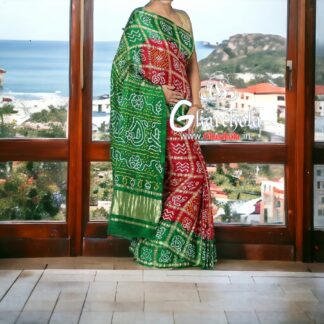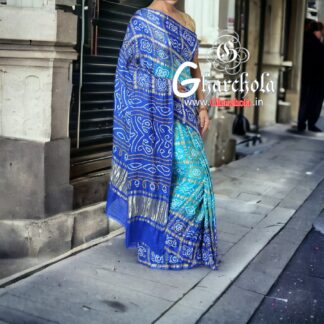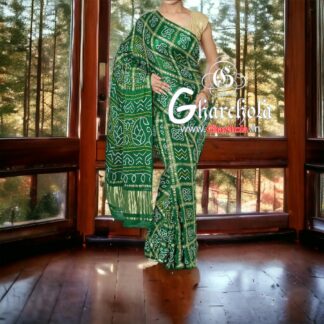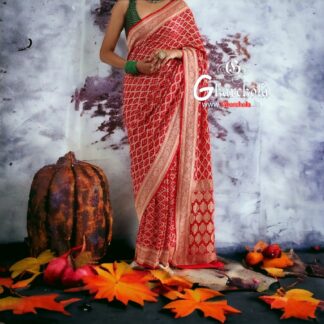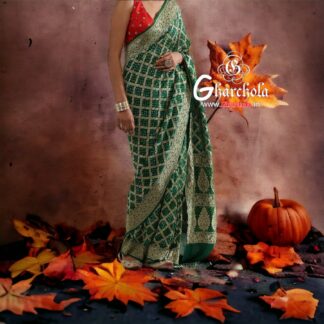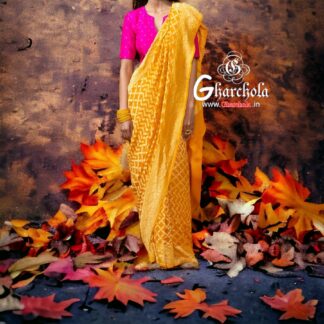TThe History of the Panetar r is a typical Gujarati wedding outfit for brides. Both Hindu and Jain brides wear a panetar and a gharchola.
The panetar and gharchola form an important aspect of the wedding ritual. The panetar sari is a gift by the bride’s maternal uncle while the gharchola sari is the gift from her new in-laws. Historically, the bride wore the panetar at the beginning of the wedding and then gharchola at the end of the wedding ceremony.
Today, it is common for the bride to wear a gharchola chunni over her head and shoulder to symbolize her movement from one family to another.
The paneter is an unique silk sari or chenia choli with with a white body and red border. The plain white body is woven in Gajji silk with linear stripes or checks in gold zari. There are tie dyed (bandhani) motifs usually yellow/gold or green to adorn the sari. You can see the details in the photos below.The History of the Panetar
-
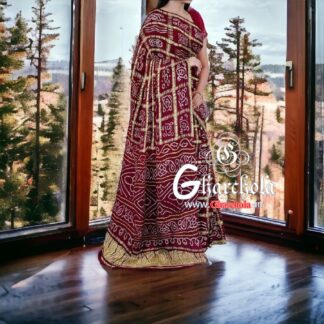
Maroon Gharchola Saree Pure Gaji Silk Rai Bandhani
Sale! Original price was: ₹16,500.00.₹12,500.00Current price is: ₹12,500.00. Add to basket -
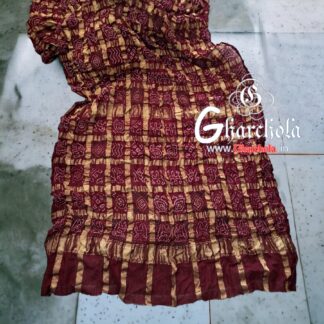
Bold Maroon Gharchola Rai Bandhani Saree Traditional Wedding
Sale! Original price was: ₹15,500.00.₹9,800.00Current price is: ₹9,800.00. Add to basket -
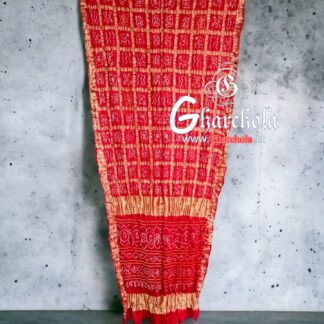
Red Bandhani Gharchola Saree Naksi Jari Pure Gaji Silk
Sale! Original price was: ₹19,500.00.₹16,500.00Current price is: ₹16,500.00. Add to basket
AD MORE ON GHARCHOLA.IN OR WHATSAPP


